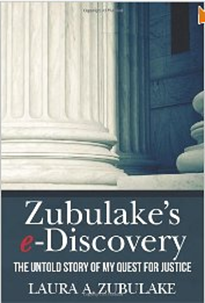eDiscovery Case Law: No Kleen Sweep for Technology Assisted Review

For much of the year, proponents of predictive coding and other technology assisted review (TAR) concepts have been pointing to three significant cases where the technology based approaches have either been approved or are seriously being considered. Da Silva Moore v. Publicis Groupe and Global Aerospace v. Landow Aviation are two of the cases, the third one is Kleen Products v. Packaging Corp. of America. However, in the Kleen case, the parties have now reached an agreement to drop the TAR-based approach, at least for the first request for production.
Background and Debate Regarding Search Approach
On February 21, the plaintiffs asked Magistrate Judge Nan Nolan to require the producing parties to employ a technology assisted review approach (referred to as "content-based advanced analytics," or CBAA) in their production of documents for discovery purposes.
In their filing, the plaintiffs claimed that “[t]he large disparity between the effectiveness of [the computer-assisted coding] methodology and Boolean keyword search methodology demonstrates that Defendants cannot establish that their proposed [keyword] search methodology is reasonable and adequate as they are required.” Citing studies conducted between 1994 and 2011 claimed to demonstrate the superiority of computer-assisted review over keyword approaches, the plaintiffs claimed that computer-assisted coding retrieved for production “70 percent (worst case) of responsive documents rather than no more than 24 percent (best case) for Defendants’ Boolean, keyword search.”
In their response, the defendants contended that the plaintiffs "provided no legitimate reason that this Court should deviate here from reliable, recognized, and established discovery practices" in favor of their "unproven" CBAA methods. The defendants also emphasized that they have "tested, independently validated, and implemented a search term methodology that is wholly consistent with the case law around the nation and that more than satisfies the ESI production guidelines endorsed by the Seventh Circuit and the Sedona Conference." Having (according to their briefing) already produced more than one million pages of documents using their search methods, the defendants conveyed outrage that the plaintiffs would ask the court to "establish a new and radically different ESI standard for cases in this District."
Stipulation and Order
After “a substantial number of written submissions and oral presentations to the Court” regarding the search technology issue, “in order to narrow the issues, the parties have reached an agreement that will obviate the need for additional evidentiary hearings on the issue of the technology to be used to search for documents responsive to the First Requests.” That agreement was memorialized this week in the Stipulation and Order Relating to ESI Search (link to stipulation courtesy of Law.com). As part of that agreement, the plaintiffs have withdrawn their demand that the defendants apply CBAA to the first production request (referred to in the stipulation as the “First Request Corpus”).
As for productions beyond the First Request Corpus, the plaintiffs also agreed not to “argue or contend” that the defendants should be required to CBAA or “predictive coding” with respect to any requests for production served on any defendant prior to October 1, 2013. As for requests for production served after October 1, 2013, it was agreed that the parties would “meet and confer regarding the appropriate search methodology to be used for such newly collected documents”, with the ability for either party to file a motion if they can’t agree. So, there will be no TAR-based approach in the Kleen case, at least until next October.
So, what do you think? Does this signal a difficulty in obtaining approval for TAR-based approaches? Please share any comments you might have or if you’d like to know more about a particular topic.
Disclaimer: The views represented herein are exclusively the views of the author, and do not necessarily represent the views held by CloudNine Discovery. eDiscoveryDaily is made available by CloudNine Discovery solely for educational purposes to provide general information about general eDiscovery principles and not to provide specific legal advice applicable to any particular circumstance. eDiscoveryDaily should not be used as a substitute for competent legal advice from a lawyer you have retained and who has agreed to represent you.






